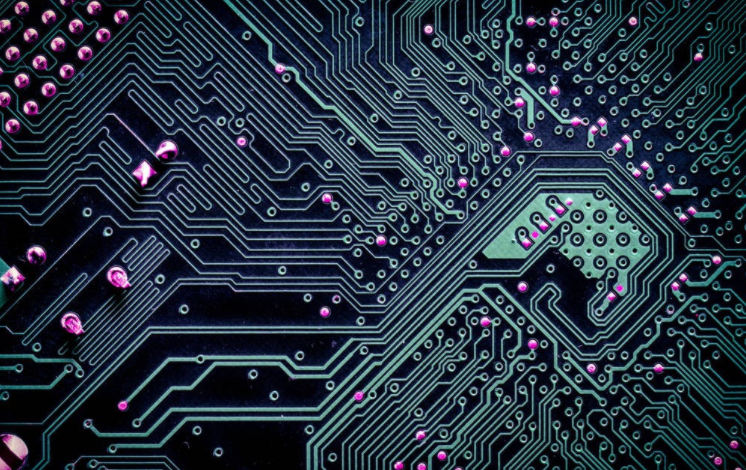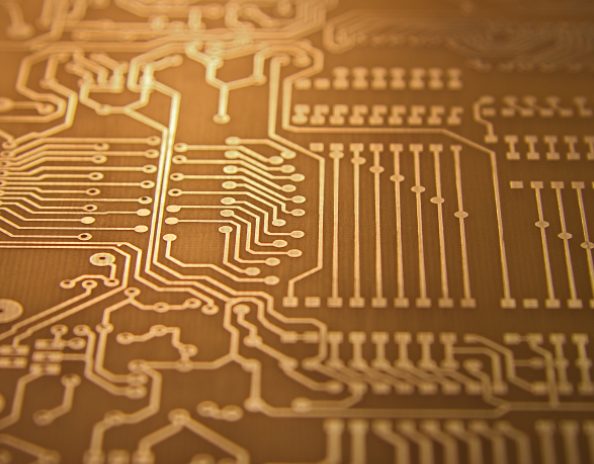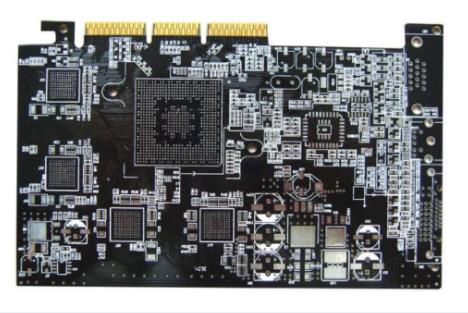
Analysis of the Influence of Thixotropy on PCB Ink Efficiency
The success or failure of ink use directly affects the overall technical requirements and quality indicators of products To this end, PCB manufacturers attach great importance to the efficiency of ink In addition to the well-known ink viscosity, the thixotropy of ink is often ignored It plays a very important role in screen printing In order to more clearly explain the impact of thixotropy on screen printing, we must also start with the basic ink and screen printing principles Then introduce the concept of thixotropy In the whole production process of modern PCB, ink has become one of the indispensable auxiliary materials in PCB production It plays a very important role in the materials used in PCB manufacturing The success or failure of ink use directly affects the overall technical requirements and quality indicators of PCB shipment To this end, PCB manufacturers attach great importance to the efficiency of ink In addition to the well-known ink viscosity, the thixotropy of ink is often ignored It plays a very important role in screen printing In order to more clearly explain the impact of thixotropy on screen printing, we must also start with the basic ink and screen printing principles Next, we analyze and explore the influence of thixotropy on the performance of ink in PCB board making:
Printed circuit board

1. Wire mesh
Screen is one of the Indispensable Materials in screen printing process Without screen printing, it cannot be called screen printing Screen printing is the soul of screen printing technology Wire mesh is almost all silk fabrics (of course there are also non-silk fabrics). The materials are generally divided into nylon, polyester fiber and stainless steel. The weaving methods can be divided into plain weave and weaving According to the structure of silk, it can be divided into single strand and multi strand It can be divided into: s (thin), t (medium), hd (heavy) according to the thickness of the network The mesh of the mesh can be roughly divided into: low mesh, medium mesh, and high mesh In PCB industry, t-net is most commonly used Except for individual special needs, S and HD networks are generally not used This is because PCB industry is a high-tech industry It is different from pure handwork and artistic skills Generally, the technological level of handicrafts and artistic skills is not high As long as it can achieve or reach the human visual effect For PCB, it is not only neat and beautiful PCB board is used for current conduction and signal transmission It must meet the power efficiency requirements of fine geometric dimensions, which need to be strictly measured Therefore, we need to know several important technical parameters related to wire mesh
1) Thickness of the wire mesh: Thickness refers to the measured value of the thickness of the wire mesh when it is standing still under no tension. The measured value is the statistical average value obtained from the measured data, expressed in mm The thickness is determined by the diameter of the wire that makes up the filter screen, which is related to the amount of ink that the screen passes through
2) The opening area ratio of the mesh: it is the ratio of the mesh area to the mesh area, expressed in percentage The higher the value, the larger the mesh opening
3) The amount of ink penetration of the screen: This refers to the theoretical value. In the actual screen printing production, the ink penetration will be affected by the screen data and efficiency, the viscosity of standard ink, the fineness of pigment, and the thixotropy of ink Hardness of scraper, printing pressure, printing speed, contact distance and other factors
2. Ink
Refers to the colored gelatinous substance used for printed boards. It usually consists of synthetic resin, volatile solvent, oil and filler, drying agent, pigment and thinner It is usually called ink
2.1 Resin: Resin is an important component to form ink film and determine ink efficiency PCB printing ink brand has its own formula We usually call it the excellent performance of the brand ink In fact, resin plays a very important role in it It determines the operability, luster, adhesion, hardness, water resistance, solvent resistance, acid and alkali resistance, ink temperature resistance, etc
2.2 Solvents: Functions of Solvents:
1) Dissolve the resin. Make it a good linking material;
2) Dissolving pigments and auxiliaries;
3) Adjust ink viscosity;
4) Adjust the drying speed of the ink;
5) Dissolve and penetrate the substrate to enhance adhesion. Ink solvent is not a single kind and component Considering the solubility and drying rate, most solvents are mixtures Different inks, different uses, different solvents So ink manufacturers have several different types of solvents Only one or two solvents can be used for one ink Generally speaking, since the resin system used in the research and development of the same ink manufacturer is basically determined, the solvent provided by the ink produced by the same ink manufacturer can be widely used
2.3 Pigment: Pigment is mainly used Pigments are classified into organic pigments and inorganic pigments Organic pigment refers to non mineral pigment with bright color and complete spectrum, but usually poor hiding ability Inorganic pigments refer to minerals For example: titanium dioxide, zinc white, iron blue, carbon black, etc, They have good covering power, strong light resistance and aging resistance. PCB printing ink is mostly of this kind In addition to being used as a colouring agent, pigments also play a role in light resistance, heat resistance, flux resistance, and chemical resistance of inks
2.4 Auxiliary agent: the purpose of adding auxiliary agent to the ink is to improve the physical properties of the ink, improve the printing adaptability of the ink and improve the printing effect Auxiliary equipment includes defoamer, dispersant, diluent, homogenizer, curing agent, color separation inhibitor, precipitation inhibitor, plasticizer, coupling agent, UV absorber, catalyst, concentrator, etc
3. Several important technical properties of PCB board ink
Which the ink quality of the PCB board is excellent, in principle, it is impossible to deviate from the combination of the above main components Excellent ink quality is the comprehensive embodiment of science, advanced formulation and environmental protection It is reflected in:
1) Viscosity: short for dynamic viscosity. It is usually expressed by viscosity, that is, the shear stress of fluid flow divided by the velocity gradient in the direction of the flow layer. The international organization is Pascal/second (pa. s) or millipascal/s (mpa. s) In PCB production, it refers to the fluidity of ink under external force
2) Plasticity: After the ink is deformed by external force The plasticity of the ink is beneficial to improve the printing accuracy;
3) Thixotropy: (thixotropy) ink is gellous when standing, and the characteristics of viscosity change when contacting, also known as thixotropy and sag resistance;
4) Fluidity: (leveling) the degree to which the ink spreads around under the action of external force. Liquidity is the reciprocal of viscosity, which is related to the plasticity and thixotropy of ink If the plasticity and thixotropy are large, the fluidity is large; If the liquidity is high, the mark is easy to expand The fluidity is small, and it is easy to form a network, which leads to the formation of ink;
5) Viscoelasticity: refers to the rapid rebound performance of the ink that is sheared and broken after the ink is scratched by the scraper. It is required that the ink deforms quickly and the ink rebounds quickly to be conducive to printing;
6) Drying: It is required that the ink dry on the screen as slowly as possible;
7) Fineness: the size of segment and solid material particles, PCB ink is generally less than 10mm, and the size of fineness should be less than one chip of the mesh opening;
8) Drawability: When the ink is lifted with an ink level, the extent to which the silk ink is stretched without breaking is called extensibility The ink filament is very long, and many filaments will appear on the ink surface and printing surface, making the substrate and printing plate dirty, and even cannot be printed;
9) Transparency and hiding power of ink: For PCB board ink Generally speaking, line ink, conductive ink and character ink all need high hiding power Solder resist is more flexible
10) Chemical resistance of ink: According to different purposes of PCB board ink, the corresponding requirements have strict standards for acid, alkali, salts and solvents;
11) Physical properties of ink resistance: PCB board ink must meet external scratch resistance, thermal shock resistance, mechanical peeling resistance, and meet variable strict electrical performance requirements;
12) The use of ink is safe and environmentally friendly: PCB board ink is required to be low toxic, tasteless, safe and environmentally friendly
We summarized the basic characteristics of the above 12 PCB inks, and in the actual operation of screen printing, the viscosity problem is closely related to the operator The viscosity is closely related to the smoothness of screen printing Therefore, in PCB ink science and technology archives and QC, viscosity marks are clear, indicating under what conditions and types of viscosity testing instruments are used In the actual printing process, if the ink viscosity is too high, it will lead to printing difficulties and serious zigzag edges of graphics In order to improve the printing effect, thinner will be added to make the viscosity meet the requirements But in many cases, it is not difficult to find this. In order to obtain the ideal solution (solution), no matter what viscosity you use, this is still impossible Why? After in-depth study, the study found that ink viscosity is an important factor, but this is not the case Another very important factor is thixotropy, which also affects printed circuit boards







